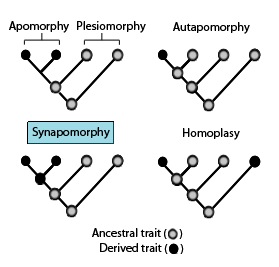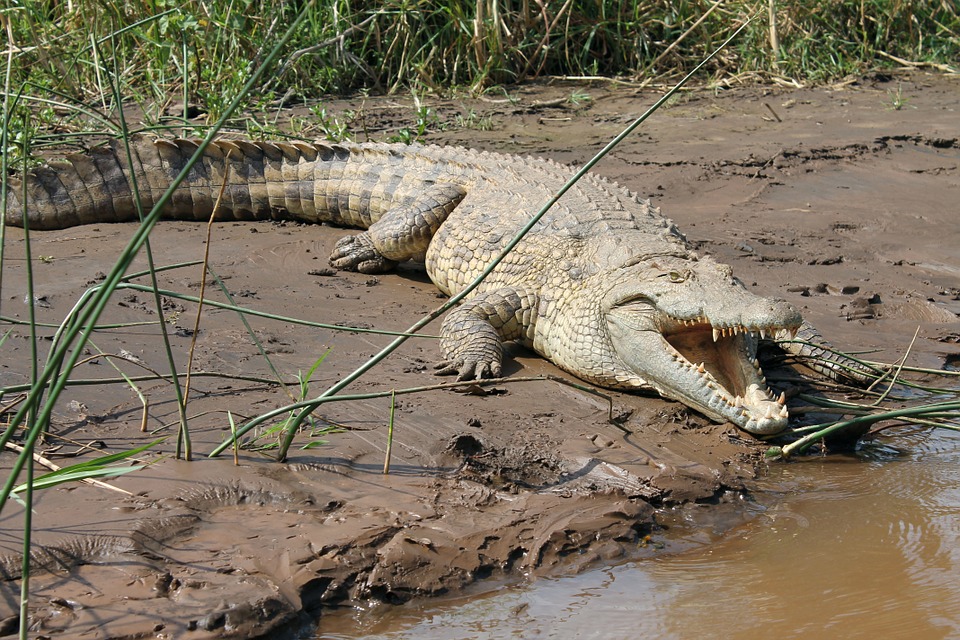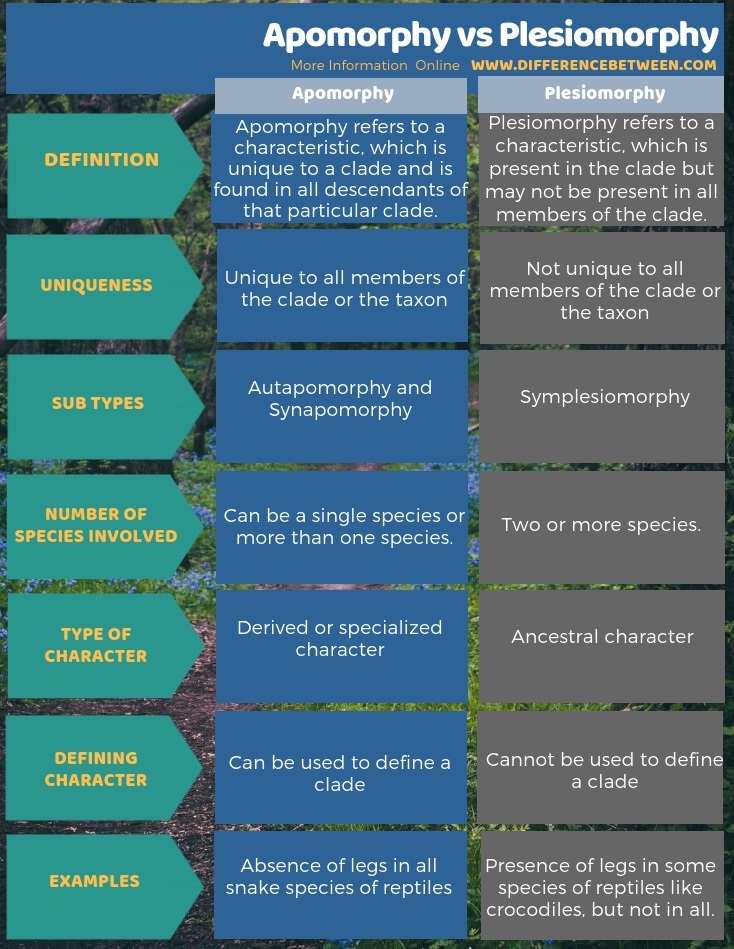Difference Between Apomorphy and Plesiomorphy
Table of Contents
The key difference between apomorphy and plesiomorphy is that the apomorphy refers to a characteristic which is unique to a clade and is found in all descendants of that particular clade while the plesiomorphy refers to a characteristic which is present in the clade but may not be present in all members of the clade.
In phylogenetics, cladistics is the area that classifies organisms into clades or groups based on the characteristics that inherit by the ancestors. It is a very reliable form of study that helps to analyze evolutionary and phylogenetic relationships. Different terminologies can be used to describe characteristics of each clade such as apomorphy, plesiomorphy, autapomorphy, synapomorphy, and homoplasy, etc. Among them, apomorphy and plesiomorphy are relative terms. In these studies, computer-based software is really helpful to study the characteristics and features of Apomorphy and Plesiomorphy.
CONTENTS
1. Overview and Key Difference
2. What is Apomorphy
3. What is Plesiomorphy
4. Similarities Between Apomorphy and Plesiomorphy
5. Side by Side Comparison – Apomorphy vs Plesiomorphy in Tabular Form
6. Summary
What is Apomorphy?
Apomorphy is an evolutionary characteristic or a trait, which is unique to a particular clade. This characteristic is present in all the descendants of that particular clade. Hence, we can use the apomorphic characteristic of a clade or a taxon to define a particular clade or a taxon. However, in terms of phylogeny, we cannot use the apomorphy to define phylogenetic relationships. Instead, we can use it to derive relativeness between species.

Figure 01: Apomorphy
Autapomorphy and synapomorphy are two types of apomorphy. Autapomorphy refers to the case where the characteristics belong to a single species only. In contrast, synapomorphy refers to the scenario where two or more species share the characteristics.
There are many examples of apomorphy such as the absence of legs in all snakes belonging to reptiles, the ability of speech in humans and the presence of feathers in caves, etc.
What is Plesiomorphy?
Plesiomorphy describes a trend in a clade where a character is homologous for the clade but is not present in all the members within the particular clade or a taxon. We cannot observe plesiomorphy in a single species. Therefore, it is not useful to define a clade.

Figure 02: Plesiomorphy
Moreover, Plesiomorphy is also known as symplesiomorphy as it is a character shared by two or more members and is not unique to all members of the clade. An example of a plesiomorphy includes the presence of legs only in some members of the clade reptile such as the crocodile.
What are the Similarities Between Apomorphy and Plesiomorphy?
- Both apomorphy and plesiomorphy are derived from evolutionary relationships.
- They are useful to analyze characteristics of a clade or a taxon.
- We can analyze both using the computer-based analysis.
What is the Difference Between Apomorphy and Plesiomorphy?
Apomorphy and plesiomorphy are two terms used in cladistic to describe the characteristics shared by organisms and species. Apomorphy describes a situation where a characteristic is present in all members of the clade hence it is unique to that particular clade. In contrast, plesiomorphy is a situation where a characteristic is present in the clade, but not among all members. Hence, it is not a unique characteristic to that particular clade. This is the key difference between apomorphy and plesiomorphy. Furthermore, we can use the apomorphy to define a clade but not the plesiomorphy.
The below infographic presents more details on the difference between apomorphy and plesiomorphy in tabular form.

Summary – Apomorphy vs Plesiomorphy
Apomorphy is the phenomenon where all members of a particular clade or a taxon have a unique characteristic. Therefore, this characteristic can be used to define that particular clade. This apomorphic characteristic/trait can be an acquired characteristic or a special characteristic. In contrast, plesiomorphy is the phenomenon where an ancestral characteristic or trait is present in a clade but is not unique to all members of the clade. Thus, it does not define the clade. This is the difference between apomorphy and plesiomorphy.
Reference:
1.“Lab II – Phylogenetics(2).” Basic Flight Physics. Available here
2.Richter, Stefan. “Homology and Synapomorphy‐Symplesiomorphy-Neither Synonymous nor Equivalent but Different Perspectives on the Same Phenomenon.” Freshwater Biology, Wiley/Blackwell (10.1111), 2 Nov. 2016. Available here
Image Courtesy:
1.”Synapomorphy”By Ferahgo the Assassin – Own work, (CC BY 3.0) via Commons Wikimedia
2.”1006772″ (CC0) via Max Pixel
ncG1vNJzZmivp6x7pbXFn5yrnZ6YsqOx07CcnqZemLyue8OinZ%2Bdopq7pLGMm5ytr5Wau26tz6ikqKqgncZurc2dZKmklai2sLnOq6ehsV8%3D